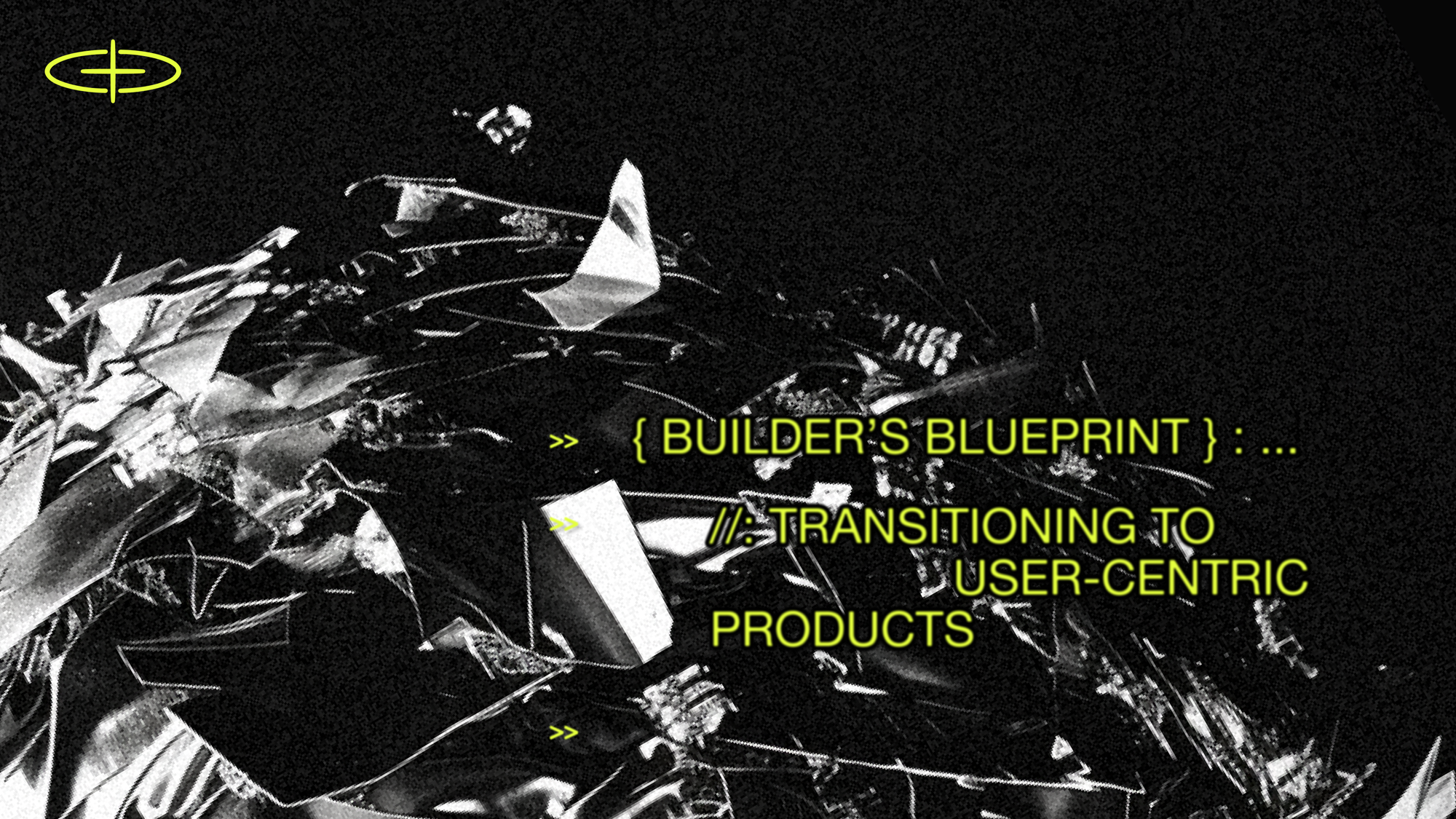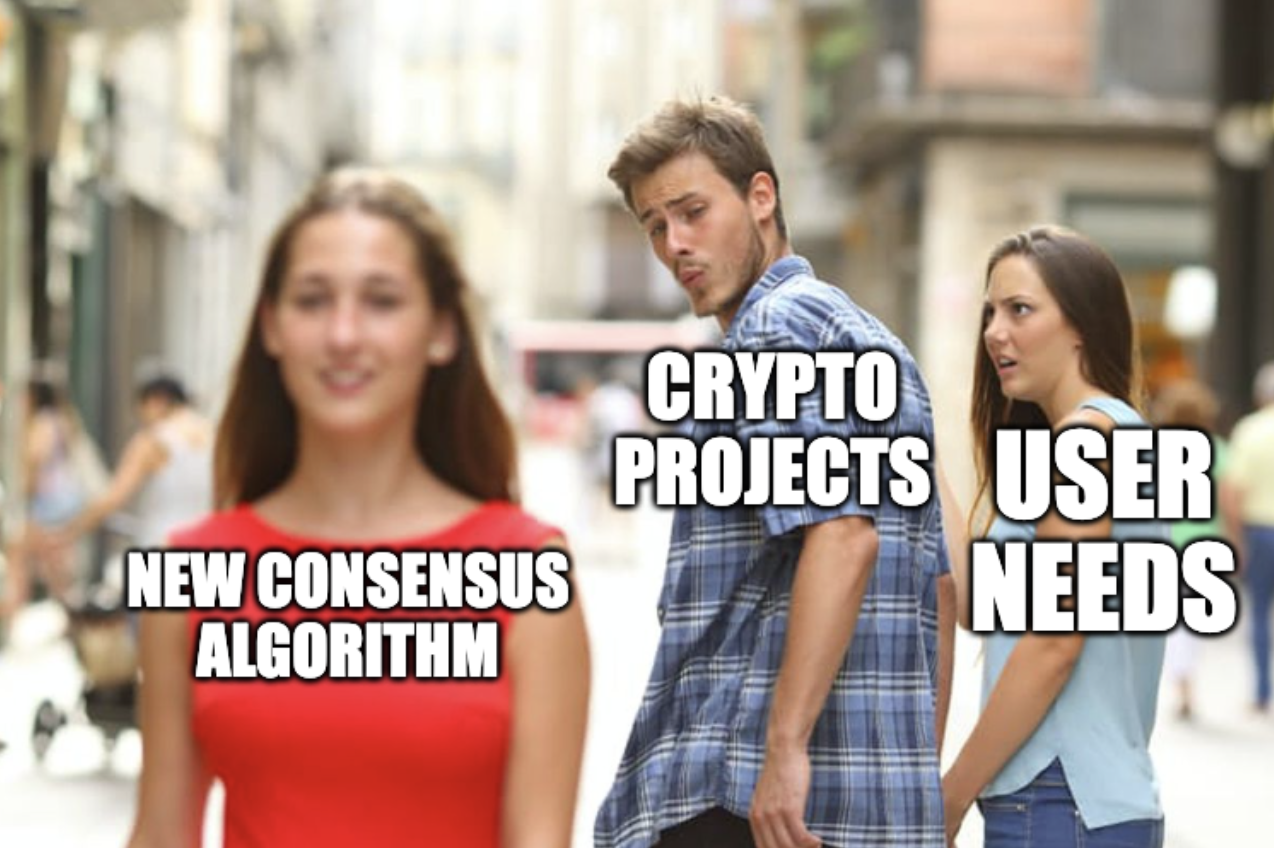Shifting Focus: From Tech-Centric to User-Centric Crypto Products

This is an opinion piece by Sophon's VP of Product, @ramonIsTweeting.
Product development in crypto must shift its focus from technological obsession to delivering real value to users.
Recently, a friend said: “I woke up with a great idea for a viral video. I just hope that when I post it on TikTok, they'll store my video on an AWS S3 bucket and my post information on a PostgreSQL database on Google Cloud.”
Of course, this conversation never happened – users simply don't think this way. They prioritize the value a product offers over its underlying technology. Yet, in the crypto industry, we tend to fixate on technological advancements rather than creating meaningful user experiences.

I've seen numerous crypto projects building products simply because they can, not because there's demand. Many grants programs fund ideas and protocols with zero market fit, and venture capitalists pour money into infrastructure that ultimately goes unused – even by the investors themselves.
It's time to realign our focus and prioritize user needs over technological prowess. But first, why does this disconnect between technology and user value exist in our industry?
This disconnect occurred because the influx of speculative capital in our nascent industry gave the false impression of unlimited resources, leading to excessive exploration without a focus on real user needs.
However, these times are ending. Now, a few companies in the space have recognized a new paradigm – consumer crypto, or as I prefer to call it, "product-market fit (PMF)." In traditional startups, PMF is a non-negotiable foundation for success. Rather than rushing to launch a token, these companies are focused on building revenue-generating products that will sustain them long-term.
"Product-market fit," a term initially coined by entrepreneur Andy Rachleff and popularized by Marc Andreessen, refers to creating a product that meets strong market demand – customers actively use it, are willing to pay for it, and eagerly recommend it to others.
Builders' Blueprint: Transitioning to User-Centric Products
I believe there are three key pillars every builder in the space should focus on to be ready for the next cycle:
1. Shift Focus from Technology to Value
Shift your focus away from selling blockchain technology itself. The infrastructure is already robust and accessible. Creating more general-purpose blockchains won't drive adoption of a technology that hasn't yet reached mainstream users. Even if your product targets other developers, emphasize the value it provides, not just the underlying tech.
You’re probably thinking, “Hey, look who's talking. Isn't Sophon just another Layer 2?" To that, my response is: Sophon isn't merely an L2; rather, it incorporates an L2 as part of our broader platform infrastructure. It plays a crucial role in how we deliver value, but it's not the sole focus. Our emphasis is on the benefits we bring to users and developers alike. Ultimately, the Sophon blockchain should be invisible to most users.
2. Meet Users Where They Are
The path to widespread crypto adoption lies in integrating blockchain rails into real-world applications seamlessly – so much so that users aren't even aware they're interacting with blockchain tech. For instance, Polymarket isn't popular because it's built on a blockchain; it's successful because it's simple, entertaining, and adds value to people's lives by offering an open, unrestricted market for predictions. Similarly, consider how apps like Cash App and Venmo have integrated financial services into user-friendly platforms without burdening users with complex financial jargon.
Adoption will come when end-users find real value in applications, driven by the benefits they offer, not by the underlying technology. By offering familiar experiences and valuable products, you can achieve product-market fit.
3. Move Away from Unsustainable Incentives
Airdrops were originally intended to encourage users to invest in a product's growth by giving them a stake in the company. The expectation was that these stakeholders would contribute to the product's success. However, the reality today is different. Companies spend months planning token launches and airdrops, only to face complaints, massive sell-offs, and a community that quickly moves on to the next opportunity.
Instead of focusing on short-term incentives, consider developing engaging and enriching loyalty programs. While crafting these experiences is more challenging, they are far more rewarding for both users and the platform in the long run. Such programs should allow users to benefit meaningfully while ensuring that these benefits are sustainable and mutually advantageous. Think about how traditional companies like Starbucks have built loyalty through rewards that encourage repeat engagement without relying on fleeting incentives.
How Can Sophon Help You Achieve Product-Market Fit?
Sophon's ultimate vision is to enable true ownership and facilitate fair value creation and transfer on the internet, particularly for creators and the entertainment industry.
However, we recognize that this is a significant undertaking, and we can't achieve it alone. Therefore, we aim to empower others to join us in this mission. And by "empower," we don't mean, "Please hire five Solidity developers and start figuring out blockchain." Instead, we mean, "Here is an API that allows you to integrate value into your product within minutes." Do you know why developers love Stripe? Developers love Stripe because it's incredibly simple to use. Similarly, we are committed to helping builders bring the internet of value to their products with ease.
Here is a non-exhaustive list of some key features we're developing to assist you:
1. Seamless User Onboarding
With Native Account Abstraction – a mechanism that enables flexible and user-friendly account management – we leverage familiar authentication methods like Google and Apple sign-ins to create self-custodial accounts. This approach allows users to gradually assume full ownership if they choose, by adding passkeys or even Externally Owned Account (EOA) signers, and removing the Web2 authentication when they're ready. Crypto-savvy users can immediately set up their accounts using their preferred EOA. This method reduces onboarding friction, making it easy for newcomers while providing the control and flexibility that experienced users expect.
We'll provide SDKs to simplify the integration of Sophon accounts into your product, enabling users to interact without needing to install browser extensions, and allowing you to focus on your product's core value instead of basic infrastructure.
2. Gasless Transactions
Imagine trying a new product but being required to pay for your very first interaction – how likely would you be to proceed? To remove such friction and enhance user onboarding, we offer a robust Paymaster system that allows you to sponsor transactions for your users.
Our Paymaster system is fully configurable – you set the rules for which transactions to sponsor. For example, you might cover the first five transactions for new accounts, all transactions for your top users, 100 transactions per week for users holding your membership NFT, or even off-chain criteria, like sponsoring transactions for the most active users in your Discord. The choice is yours. This feature is available not only to users with a Sophon account but also to those using their own EOAs, thanks to our native implementation of Account Abstraction.
Additionally, you have the flexibility to collect fees in your own token if that aligns with your business model.
3. SDKs & Tooling
Just as we aim to make the user experience seamless, we want building on Sophon to be effortless for you. That's why we're developing SDKs and tooling to abstract much of the complexity involved in integrating Sophon into your product.
4. Flexible Platform Evolution
Our platform is designed to be flexible and adaptable to meet the evolving needs of your applications. As your users' requirements change, we're prepared to adjust and enhance our network to ensure it continues to support best-in-class consumer experiences. This means we're committed to evolving alongside you, adapting our tech stack based on what best serves your needs.
It's time to build differently – putting users at the heart of development. Building goes beyond coding; shifting the mindset from "technology-centric" to "user-centric" will unlock the creation of sustainable, attractive, and valuable products that form the backbone of the internet of value.
The crypto ecosystem has provided builders with ample time to experiment and learn. However, that era is over. We must now mature and focus on delivering professional-grade products and sustainable businesses. The future lies in our ability to make such products accessible and valuable to everyday users. By simplifying the experience and focusing on real-world benefits, we can unlock the full potential of this transformative technology.
Ultimately, technology should serve and empower users. By adopting a user-first approach, we can drive meaningful adoption and create products that resonate. I am eager to help our ecosystem build products that people love. Do you have ideas you want to discuss or need help with your product? Reach out to me at product@sophon.xyz.
Sophon becomes what you create.
Disclaimer: This content is provided for informational purposes only, and should not be relied upon as legal, business, investment, financial or tax advice. You should consult your own advisers as to those matters. References to any digital assets and the use of finance-related terminology are for illustrative purposes only, and do not constitute any recommendation for any action or an offer to provide investment, financial or other advisory services. This content may not under any circumstances be relied upon when making a decision to purchase any digital asset referenced herein. The content speaks only as of the date indicated.

